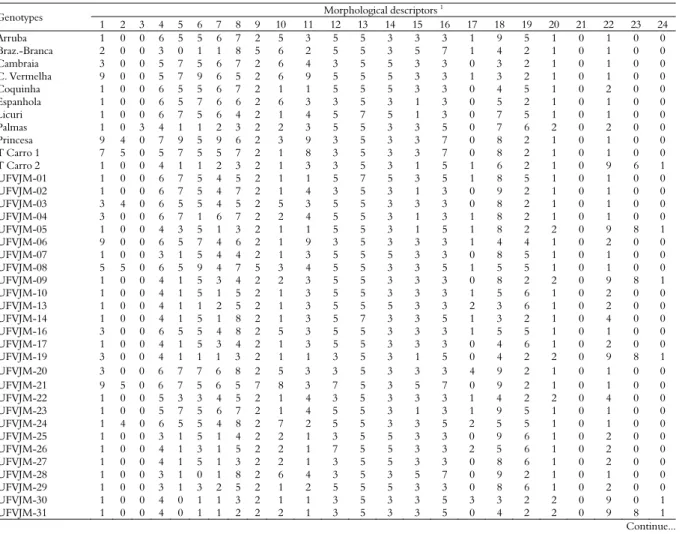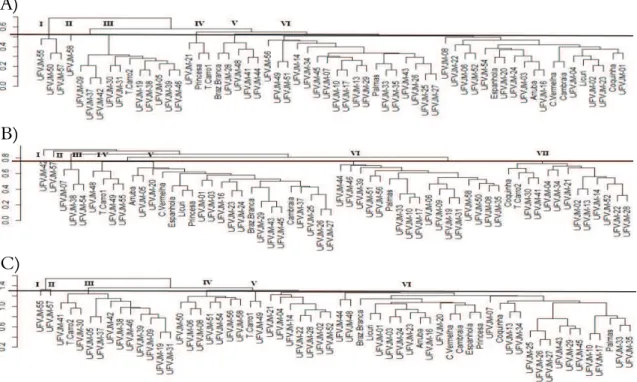Genetic dissimilarity among sweet potato genotypes using morphological and molecular descriptors
Texto
Imagem




Documentos relacionados
The dendrogram produced based on Genetic dissimilarity of Jaccard estimated based on the combined data of AFLP, RAPD and SSR molecular markers using the UPGMA cluster method
The purpose of this study was to evaluate the genetic diversity in 16 potato cultivars that are being made available to potato growers in Brazil, and to develop a molecular
Abstract - The objectives were to estimate variance, co-variance and heritability components of potato tuber shape and fresh weight and the correlation among these traits in the
Dendogram of the genetic divergence among the 27 accessions of birds of paradise obtained by the UPGMA method based on dissimilarity matrix of seven characteristics.. Cophenetic
• The results that were obtained from the agronomic and morphological traits partially agreed with those obtained by the RAPD markers; • Taken together, these data
Means of the characters grain yield (GY), weight of a thousand grains (WTG), hectoliter weight (HW), panicle weight (PW), grain weight per panicle (GWP), number of grains per
Thus, the objectives of this study were to evaluate the genetic diversity of 25 mayze hybrids based on quantitative traits using multivariate techniques and obtain the
The cluster analysis results using the UPGMA and Tocher’s methods and the cluster consistency test via Fisher’s discriminant analysis may serve as a basis for further work